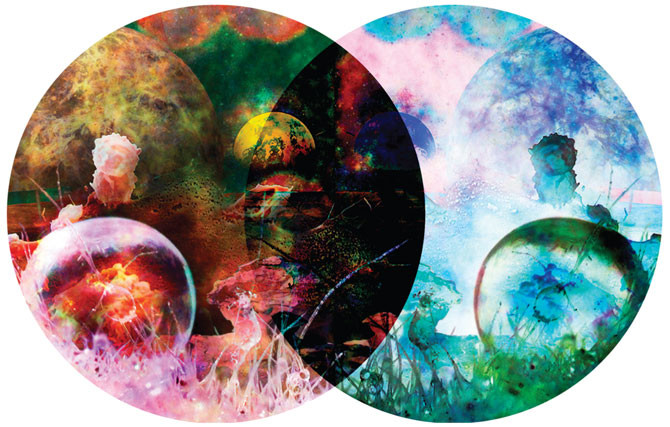Illustration by Kamran Samimi
Carol Cleland is a philosophy professor at the University of Colorado, Boulder. She has written extensively on the nature of life in general and has authored numerous articles about the shadow biosphere for the International Journal of Astrobiology and Astrobiology Magazine. In fact, she coined the term shadow biosphere.
It’s not crazy to think that Earth may be home to descendants of an alternative biogenesis, one that produced organisms current technology is unable to detect. These potential life forms are would-be residents of what has been termed the shadow biosphere—alien life forms of unknown origin and unfamiliar construction that have been thriving on this planet since its formation.
The word shadow is used to describe this phenomenon because the only clues that an ancillary biosphere might exist are the traces left behind by its potential inhabitants on environmental features that are measurable with currently available technology. This is why proof of shadow microbes is so elusive.
Under a microscope, many simple organisms we understand to be different, such as archaea and bacteria, appear remarkably similar. Finer distinctions are drawn, however, by using more sophisticated tools. For instance, microbiologists can now use genome shotgun sequencing methods and staining techniques like DAPI to discover more novel life forms than ever before. But these tools are still limited in scope. Another dilemma is that we can currently cultivate less than 1 percent of recognized microbes in the lab, and microbial communities are extremely diverse.
Considering how life is thought to have initially emerged on Earth, it makes sense to think that there are multitudes of life forms yet to be discovered.
There’s extremely strong evidence to support the theory that all life on Earth descended from a common ancestor. All biological matter is basically made up of proteins containing long strings of the same 20 amino acids, but there are more than 100 amino acids that could have potentially sparked life under the right conditions. We also know that all familiar life on Earth was spawned by the same genetic code, phosphate backbone, and four nucleotide bases for RNA and DNA. It is also a fact know that meteorites have supplied Earth with amino acids that are never used by familiar life. In fact, out of the 80 amino acids that have been identified in meteorites, only eight of them are used by life on Earth. With so many potential amino acids out there, it’s amazing that life restricts itself to 20. So why does life rely on this particular sequence of sugars, amino acids, and nucleotide bases and not some other configuration? The most reasonable explanation seems to be that the chemical conditions of early Earth dictated these restrictions: They have nothing to do with the general nature of life.
Additionally, we have evidence that life on Earth was formed fairly quickly once the correct conditions arrived. If this was the case, there’s a good possibility that nature experimented with different amino acids and nucleotide bases before the right combination clicked. As I said before, using current methods, we wouldn’t be able to detect life forms that were potentially created by other combinations. What we do know is that microbes dominated life on Earth until approximately 600 to 700 million years ago, so they are likely to be much more common throughout the universe than multicellular life. This speculation is bolstered by the fact that every time we look into the microbial world, we discover new things that we never thought possible. There may even be microbes of alternative life origins mixing with familiar microbes, but we have no way of knowing.
The question of whether or not the shadow biosphere exists is twofold, because if so, how might we go about detecting unfamiliar forms of microbial life? The ability to identify completely novel—and potentially microscopic—life forms could be of crucial significance as humans scour Mars and other planets and moons in our solar system for extraterrestrial life. The current tools used by microbiologists to explore the microbial world would never be able to detect anything very dissimilar from the forms of life we’re accustomed to on Earth. But what good would an earthbound tool be on other planets? Not much is right. But then, how does one go about designing a tool to detect life of unknown origin and unfamiliar construction? By searching for the alien at home, on Earth.
Videos by VICE
More
From VICE
-

Illustration by Reesa -

Illustration by Reesa -

Illustration by Reesa -

Illustration by Reesa
